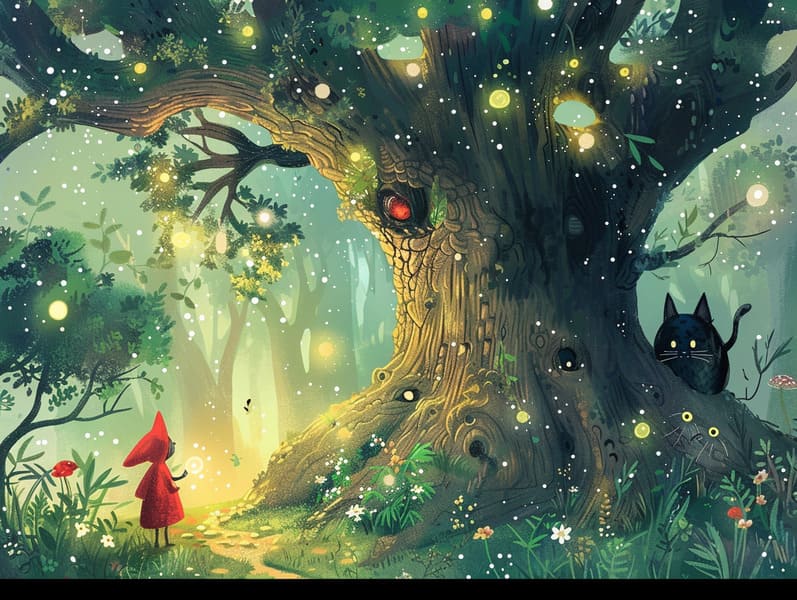Understanding the Magic of Bedtime Fables: Building Beloved Occasions with Your Little Ones
Understanding the Magic of Bedtime Fables: Building Beloved Occasions with Your Little Ones
Blog Article

Evening is a cherished time for adults and their kids. It’s a chance to ease into rest, snuggle, and experience the charm of bedtime narratives.
For years, bedtime stories for kids have been a valued legacy, offering more than just a way to drift off. They provide an moment for connection, discovery, and encouraging creativity.
The Power of Bedtime Stories
Evening stories for little ones are not just a way to complete the day. They play a crucial role in a child’s evolution and in strengthening the parent-child rapport. Here’s why they are important:
1. Closeness Moments: Sharing bedtime stories develops a special loving connection between kids and their parents. It’s a moment of closeness that helps children feel appreciated and secure.
2. Vocabulary Building: Hearing tales helps children develop their language skills. They gain new phrases, understand sentence structures, and develop their attention and comprehension abilities.
3. Fantasy and Imagination: Children's tales transport them to dreamy worlds, nurturing vision. They picture characters, settings, and adventures, which ignites their fantasy.
4. Feeling Recognition: Children’s stories often showcase characters facing difficulties and moods. These stories help kids grasp and navigate their own sentiments, promoting emotional growth.
5. Brain Growth: Paying attention to a narrative helps children develop attention span, memory, and analytical skills. They learn to follow tales, remember details, and project conclusions.
Making Storytime a Bedtime Ritual
Developing a night-time practice that involves reading narratives is effortless and beneficial. Here’s how to establish a valued part of your end-of-day habit:
1. Select a Comfortable Location: Identify a cozy place where you and your child can get cozy without intrusions. A comfy bed or a cozy reading nook works ideally.
2. Pick the Right Time: Set a specific time each night for tales. Routine helps children predict and makes the habit easier to follow.
3. Pick Stories for Their Age: Select tales that match your child’s age. Preschoolers might prefer books with pictures with uncomplicated narratives, while grown children may prefer detailed stories with more detailed stories.
4. Get Involved with the Story: Make sure the tale be immersive by doing different accents and voices, adding story sounds, and asking your child to be involved. Ask things about the story to keep them focused.
5. Make a Peaceful Setting: Lower the lights, use hushed tones, and create a peaceful environment to help your child settle down.
Where to Find Bedtime Stories
There are varied resources where you can find wonderful bedtime stories for children. Here are some choices to think about:
1. Kids’ Literature: Try your community library or bookstore to find a broad selection of bedtime stories for kids. Perusing the shelves together can be a great activity that also helps children to choose stories that they like.
2. Online Resources: There are many places online that offer click here free bedtime stories. Sites like Storyberries provide a variety of short stories for kids that you can get for free. These choices are great for finding new and different stories without fees.
3. Apps and Audiobooks: For nights when you’re too weary to read, look into audiobooks or storytelling apps. These can provide a quiet narration to read your child a story, ensuring they still get their bedtime story fix. Apps often offer engaging components that can involve them further.
4. Custom Stories: Create your own stories tailored to your child’s passions. Personalized stories can be especially engaging and meaningful. You can bring your child in the creation process, making them a part of the adventure.
Shorter Story Benefits
Short stories for kids are very helpful for bedtime. They provide all the benefits of longer stories but are more brief, making them perfect for preparing for sleep before sleep. Here’s why short stories are a perfect choice:
1. Clear and Simple: To-the-point tales are direct and easy for kids to get, even after a long day. They can swiftly grasp the line and enjoy the story without becoming uninterested.
2. Quick Engagement: These stories rapidly engage children, holding their involvement and creativity. This makes them suitable for keeping bedtime practices manageable yet enjoyable.
3. Various Options: Quick stories make possible for variety in your bedtime books. You can choose a different story each night, keeping the practice new and exciting for your child.
4. Manages Time Well: For busy parents, brief tales are a efficient way to make sure children still get their nightly dose of storytelling. They fit well into a busy schedule while still offering the full advantages of a bedtime story.
The Joy of "Read Me a Story"
The simple phrase, "Read me a story," can unlock a world of magic for children. Complying to this request not only caters to a child’s wish for attention and engagement but also creates lasting moments. Here’s why it’s enchanting:
1. Relationship: Telling tales to your child develops a deep emotional link. It’s a time for attachment, sharing, and bonding.
2. Practice: Developing a bedtime story habit creates a cherished tradition that children enjoy every night. It’s a habit that can be continued through generations.
3. Shared Learning: As you tell stories, you’ll notice your child’s progress and advancement. Their reactions, reactions, and understanding of the stories change, offering insights into their developing minds.
4. Secure Place: Bedtime stories provide a safe space for children to deal with emotions, face fears, and find comfort in the familiar presence of a parent.
To Conclude
Kids’ bedtime stories are a valuable tool for developing a child’s maturation and developing unforgettable experiences of connection.